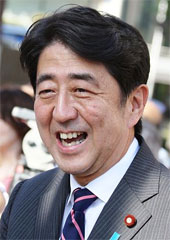The American Boulevard of Stolen Dreams: Part I — 1945-1980s
Why has the American Dream slipped out of the reach of more and more of the middle class?
December 19, 2012
Who Stole the American Dream? explains how the United States moved from an era of middle class prosperity and power and effective bipartisan politics in the 1950s, 1960s and 1970s to today’s polarized politics, starkly unequal democracy, gaping inequalities in the economy and a middle class — and a national economy — stuck in a rut.
The book breaks with the conventional wisdom that the demise of America’s middle class was caused by globalization, advancing technology and impersonal market forces. That is a misleading half-truth.
“Who Stole” argues that the real causes were a tectonic power shift in Washington, D.C., that began in the late 1970s under the Democrats. They expanded under the Republicans, who further tilted government policy in favor of the wealthy and corporations for three decades.
In addition, the “wedge economics” of shareholder capitalism that, since the 1980s, have increasingly cut the middle class out of its fair share of U.S. economic growth, rising productivity and rising corporate profits left today’s Americans with the greatest economic inequalities among advanced economies since 16th-century Spain.
Here is what the alternate form of contemporary U.S. economic history — one focused on the common man, not Fortune-riding heroes — looks like:
1948
The “Treaty of Detroit” labor agreement between General Motors and the United Auto Workers Union gives GM labor peace and auto workers annual pay increases, health benefits and monthly pensions, setting a pattern for other industries, insuring that gains from U.S. economic growth are shared between labor and management.
1950
Top CEO salary in America: GM chairman Charlie Wilson is paid $663,000, roughly $5 million in today’s dollars, and about 40 times the annual wage of his average assembly line worker.
Corporate ethic frowned on CEOs taking stock grants as unfair “competitive avarice.” Economists call this period “The Great Compression” because the income gap between the rich and the middle class is at its narrowest in the 20th century.
Mid-1940s to mid-1970s
Heyday of the middle class, when the U.S. economy is driven by the dynamics of “the virtuous circle.” Companies paid high wages and tens of millions of families had steady income to spend, generating high consumer demand.
Robust consumer demand propels businesses to invest in new plants and technology and to hire more employees, fueling the “virtuous circle of growth” to another round of expansion and higher living standards.
August 1963
March on Washington led by Martin Luther King, Jr. Student sit-ins, Freedom Rides, other civil rights demonstrations and citizen grassroots movements force change, demonstrating the political power of average Americans.
June 1964
Congress passes the 1964 Civil Rights Act with strong bipartisan support, outlawing segregation of public accommodations, following mass protests.
November 1964
Barry Goldwater, a strongly anti-union, anti-government senator from Arizona, beats the mainstream Republican Establishment to win the GOP presidential nomination, but loses to Democrat Lyndon Johnson.
Goldwater’s defense of political extremism and rejection of compromise as a matter of principle sparks the birth and growth of the Republican New Right, culminating in today’s Tea Party.
March 1965
Bloody Sunday in Selma, Alabama: Civil rights protesters led by John Lewis are brutally clubbed by Alabama state troopers and sheriff’s deputies during a march for voting rights for African Americans.
July 1965
Congress enacts Medicare with strong bipartisan support: 65 House Republicans and 13 Senate Republicans join majorities of Democrats in both chambers to pass President Johnson’s historic legislation.
1965
Consumer advocate Ralph Nader publishes his searing attack on the U.S. auto industry, “Unsafe at Any Speed,” charging automakers with marketing defective cars, and giving consumer activism new political leverage.
The burgeoning consumer movement presses Congress and the White House to create new watchdog agencies and standards for truth in packaging and truth in lending.
November 1967
Pat O’Neill, at nineteen, starts a thirty-five-year career with United Airlines as a jet airline mechanic, working the overnight “graveyard shift” at Chicago’s O’Hare Field.
He works his way up to chief mechanic, making $60,000 a year, leading a crew that does repairs and safety checks so that planes are ready to be airborne by dawn.
April 22, 1970 — “Earth Day”
The largest single mass public protest in U.S. history. Twenty million Americans participate in marches, teach-ins, and other demonstrations to protest against pollution of the environment.
1970
President Nixon, responding to public pressures, establishes the Environmental Protection Agency. Congress passes the Clean Air Act in 1970, the Clean Water Act of 1972 and other strong laws to protect the environment.
Nixon also sets up the Consumer Product Safety Commission, the Occupational Safety and Health Administration, and expands the powers of the Federal Trade Commission to protect consumers and curb the excesses of capitalism.
August 1971
Corporate attorney Lewis Powell sparks a political rebellion with his call to arms for Corporate America. Circulated by the U.S. Chamber of Commerce, Powell’s memo warns that anti-business attitudes and government regulation are threatening to “fatally weaken or destroy” the American free enterprise system.
Powell declares that business must arm itself politically, battle organized labor and consumer activists, and mount a long-term campaign to change the balance of power and policy trends in Washington.
1971-72
The CEOs of America’s biggest corporations, responding to Powell’s memo, organize the Business Roundtable, which becomes the most potent political lobbying arm of Corporate America. The National Association of Manufacturers moves its headquarters to Washington.
In one decade, the U.S. Chamber of Commerce doubles its membership and the National Federation of Independent Businesses (small business) grows from 300 to 600,000 members.
Summer 1971
After graduating from high school, Pam Scholl and Mike Hughes land solid middle-class jobs at the brand new RCA television tube plant in Centerville, Ohio.
For the next three decades, Scholl and Hughes and their classmates enjoy their version of the American Dream of secure jobs, rising pay, health benefits, and lifetime pensions a solid middle-class standard of living.
1973
From 1945 to 1973, the productivity of U.S. workers rises 96% and average hourly compensation rises in tandem, by 94%. Average Americans share in the nation’s prosperity.
In the next three decades, from 1973 to 2011, worker productivity rises another 80%, but hourly compensation rises only 10%. Ordinary Americans are cut out of their share of the nation’s economic gains.
October 1976
Inspired by their mentor, free market economist Milton Friedman, business school professors Michael Jensen and William Meckling propose in an academic study that CEOs be given stock options to align their interests with those of stockholders.
Corporate boards, seeing an advantage because options are not charged as a company expense, adopt this “pay for performance” idea. By 1980, 30% of CEOs are receiving stock option grants.
Late 1970s
Business mobilizes politically. The number of companies with Washington lobbying offices grows from 175 in 1971 to 2,445 a decade later. Along with 2,000 different trade associations, businesses have a combined Washington staff of 50,000, plus 9,000 lobbyists and 8,000 public relations specialists.
Business lobbyists and advocates now outnumber members of Congress by 130 to 1.
1977-78
In the pivotal 95th Congress under President Jimmy Carter and the Democrats, business shows its new political muscle. Its lobbyists block organized labor’s legislation and Ralph Nader’s push for a consumer protection agency. They win deregulation of airlines, railroads and trucking.
They get Congress to reject Carter’s plan to close tax loopholes for the rich. Instead, they push to cut the corporate tax rate and the capital gains tax on investment income from 49% to 28%.
1978
Two major bills alter the economic landscape for decades to come. One is an obscure insert in the tax code, paragraph 401(k), initially intended to authorize supplemental executive retirement plans and later extended by the Reagan Administration to rank-and-file workers.
The other change updates U.S. bankruptcy laws, giving management control during corporate bankruptcy, paving the way for bankruptcies in the 1990s and 2000s that canceled provisions of union contracts.
1980
Congress passes a deregulatory bill that overrules state usury laws and effectively abolishes limits on interest rates for first mortgages, paving the way for the future subprime mortgage boom.
1981
President Reagan pushes through tax cuts that heavily favor the wealthy, dropping the top personal income tax rate from 70% to 28%, the capital gains rate from 28% to 20%, and the corporate rate from 46% to 35%.
The Reagan tax cuts add $1 trillion in income for the super rich 1% during the 1980s, and another $1 trillion in each successive decade. The Forbes 400 “richest Americans” triple their net worth between 1978 and 1990, thanks to the Reagan tax cuts.
1982
President Reagan persuades Congress to pass a law authorizing the exotic loans that will become the hallmarks of the 2000s housing boom. The law permits loans never previously allowed: adjustable rate mortgages, or ARMs, with ballooning interest rates, 100% financing and “negative amortization” that permits banks to charge high fees and interest rates and allow minimal payments, causing many people to go deeper into debt, and stripping equity out of many homes.
Late 1980s to 1990s
Mutual funds popularize 401(k) plans with the slogan, “Be Your Own Money Manager.” Millions of rank-and-file employees eagerly adopt do-it-yourself retirement. Companies unload hundreds of billions in retirement costs onto their workers.
The employee share of retirement costs goes from 11% in 1980 to 51% by 2006.
The second part of The American Boulevard of Stolen Dreams will be published tomorrow.
Editor’s note: This essay is adapted from Who Stole the American Dream? (Random House) by Hedrick Smith. Copyright © 2012 by Hedrick Smith. All rights reserved. This text may not be reprinted, disseminated, or distributed in any medium without written permission of the author.
Takeaways
Shareholder capitalism left today's Americans with the greatest economic inequalities among advanced economies since 16th-century Spain.
Companies paid high wages and tens of millions of families had steady income to spend, generating high consumer demand.
Congress enacts Medicare, President Johnson's historic legislation, with strong bipartisan support.
Congress passes the Clean Air Act in 1970, the Clean Water Act of 1972 and other strong laws to protect the environment.
The number of companies with Washington lobbying offices grows from 175 in 1971 to 2,445 a decade later.
Read previous

Japan Votes to Go Back to the Future
December 18, 2012
